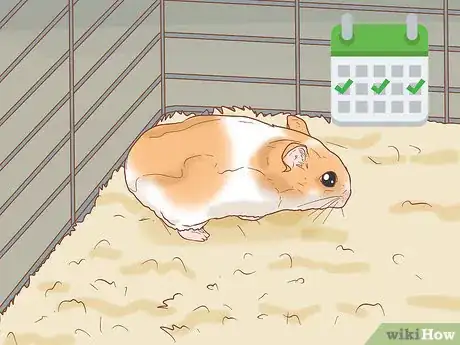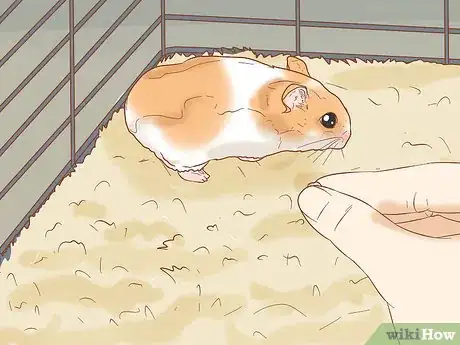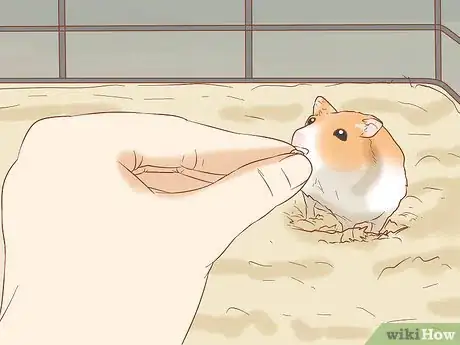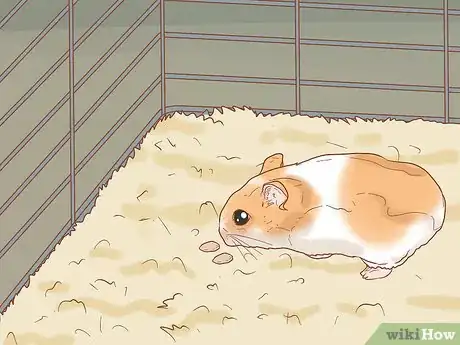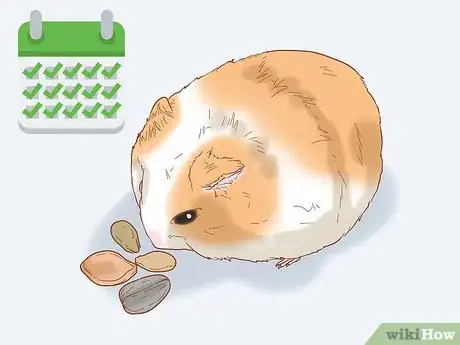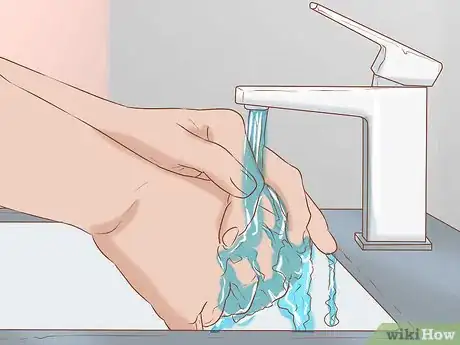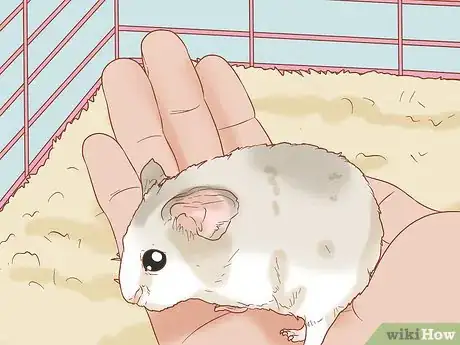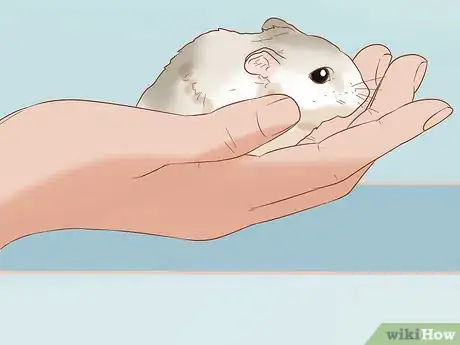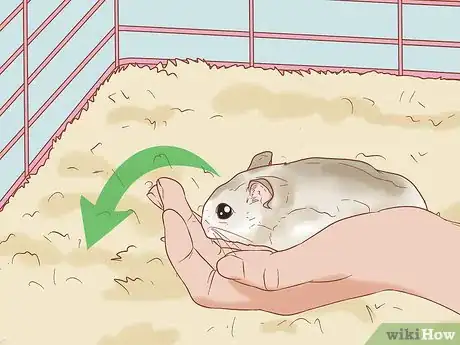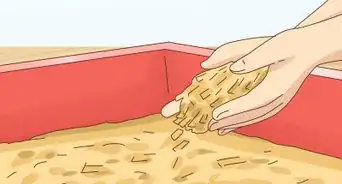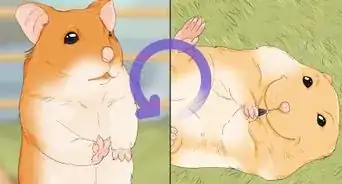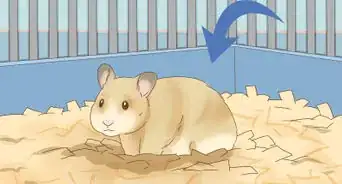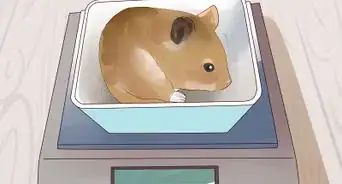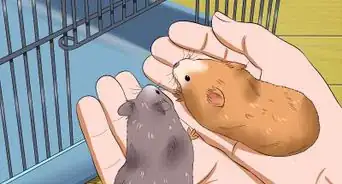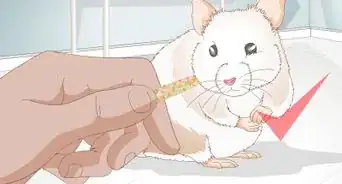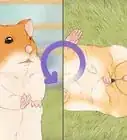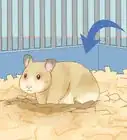This article was co-authored by Pippa Elliott, MRCVS. Dr. Elliott, BVMS, MRCVS is a veterinarian with over 30 years of experience in veterinary surgery and companion animal practice. She graduated from the University of Glasgow in 1987 with a degree in veterinary medicine and surgery. She has worked at the same animal clinic in her hometown for over 20 years.
This article has been viewed 50,833 times.
Winter white hamsters are great pets that bring their owners a lot of joy. In general, hamsters tend to be nervous in new surroundings, and winter white hamsters tend to nip their owners when anxious. However, you can easily calm and tame your hamster by minimizing its stress, caring for it properly, and handling it appropriately.
Steps
Building Trust with Your Hamster
-
1Leave your hamster alone for the first 3 to 4 days. Once you've brought your new hamster home, give it a few days to adjust to its surroundings without trying to handle it. Your hamster will likely keep itself hidden while you’re around in the beginning. Gradually, it’ll start to come out of it’s nest as it grows used to the sounds and sights of its new home. This will make taming it easier.
- Place the hamster cage in a relatively quiet part of your home. Sudden, loud noises will make your hamster nervous, so placing your hamster’s cage near an often-used doorway is not a good idea.
-
2Begin to familiarize your hamster with the sound of your voice. Take a few moments each day starting with the first day you bring your hamster home to go by your hamster’s cage and talk gently to it. This will help it associate you with your voice and get used to the way you sound. Speak in low, soothing tones to keep its anxiety at a minimum.[1]Advertisement
-
3Grab a hamster treat and put your hand inside the cage. Avoid putting your hand right next to your hamster. Position your hand on the other side of the cage and wait until your hamster comes out to inspect the food. Be patient, as the time it takes each hamster to feel comfortable varies.
- Treats might include bananas, cabbage, carrots, dried fruit, or spinach. Do not give them any acidic snack, such as citrus fruit. And limit the use of fruits as a treat. As some winter white hamsters are at a higher risk of diabetes than the average hamster, make sure to balance fruit treats with vegetable ones.
- If your hamster does not approach your hand after 7 to 10 minutes, leave the food in the cage and try again the next day.[2]
-
4Let your hamster sniff your hand as it approaches the treat. Sniffing your hand helps it get familiar with your scent, which is a big part of building trust. Hold your hand still and don't make any sudden movements, since your hamster will startle easily.
-
5Put the treat on the cage floor if it won't take it from your hand. It may take a few tries before your hamster will eat the treat directly from your hand. After it sniffs your hand, let it sniff the treat and then gently place the treat on the cage floor a few inches away from the hamster.
-
6Feed your hamster a treat daily to build trust. Your hamster will start trusting you a little more each time, and eventually it will feel comfortable enough to take the treat from your hand. If your hamster remains anxious, continues to hide when you approach, or bites you when you attempt to handle it for several weeks, consider trying a different strategy. Or take it to a veterinarian to see if it’s agitated because it’s sick.
Handling Your Hamster Properly
-
1Wash your hands thoroughly with unscented soap. You’ll want to wait until your hamster has begun to venture out of its nest and explore on its own, and when your hamster appears relaxed, such as when it is playing or grooming themselves. Then scrub your hands thoroughly with soap and water.
-
2Put your hands in the cage and let your hamster smell them. Move slowly to avoid startling the hamster. Hold your cupped hands toward the hamster and let it sniff them. If it doesn't climb into your hands, you can try nudging it a little.
- If your hamster is growling or showing their teeth, wait until they’ve stopped displaying these behaviors.
-
3Cup your hamster gently with both hands once they climb in. You want to avoid squeezing the hamster too tightly. Instead, form a cradle with your hands just high enough so that your hamster won’t fall out, and hold it so it is facing you.
-
4Lift your hamster 1 in (2.5 cm) or 2 in (5.1 cm) inches off the ground. If your hamster gets nervous and begins to jump out of your palm, you don’t want it to be high enough to injure itself. Avoid sudden or jerky movements, even if your hamster starts trying to jump out of your hand.
- White winter hamsters are quite agile. It’s best to hold them over an enclosed space so that if it does jump, they’re not loose in your home.
- Keep them away from other household pets, especially those who may naturally roam free like dogs and cats, in case your hamster gets free.
- Tightening your grip too much will make your hamster less likely to trust you.
-
5Lower your hamster gently back into its cage if it bites you. Do not try to pull it away from your skin until your hand is back in their cage. If it does not immediately release its jaws, gently pull it away. Do not shout at it as that is likely to make it more anxious and bite harder.
- Wear gloves if your hamster tends to bite. Make sure the gloves are durable enough to protect your skin and soft enough not to irritate your hamster.
-
6Hold your hamster for a few minutes each day. Going days without interaction will make it harder for your hamster to trust you. Playing with your hamster regularly will make it feel more comfortable around you and confident in its new surroundings. When your hamster will let you pick it up, crawl on you, or let you pet it, your hamster is tame. This will usually happen within a period as short as two weeks to as long as two months.
- Try placing your uncovered arm flat on a table and encouraging it to crawl up and down using treats. You can even let your hamster crawl over you while you sit in an empty bathtub.
Things You'll Need
- Hamster cage or aquarium
- Hamster food in pellet form
- Low sugar treats
- Water dispenser
- Plastic hamster wheel
- Hamster toys made of wood
